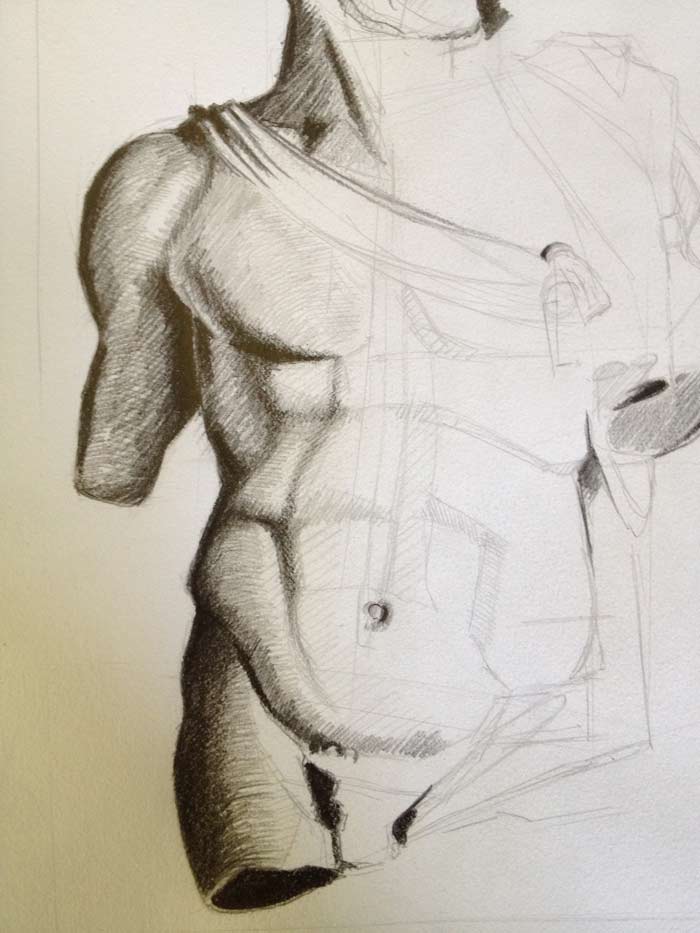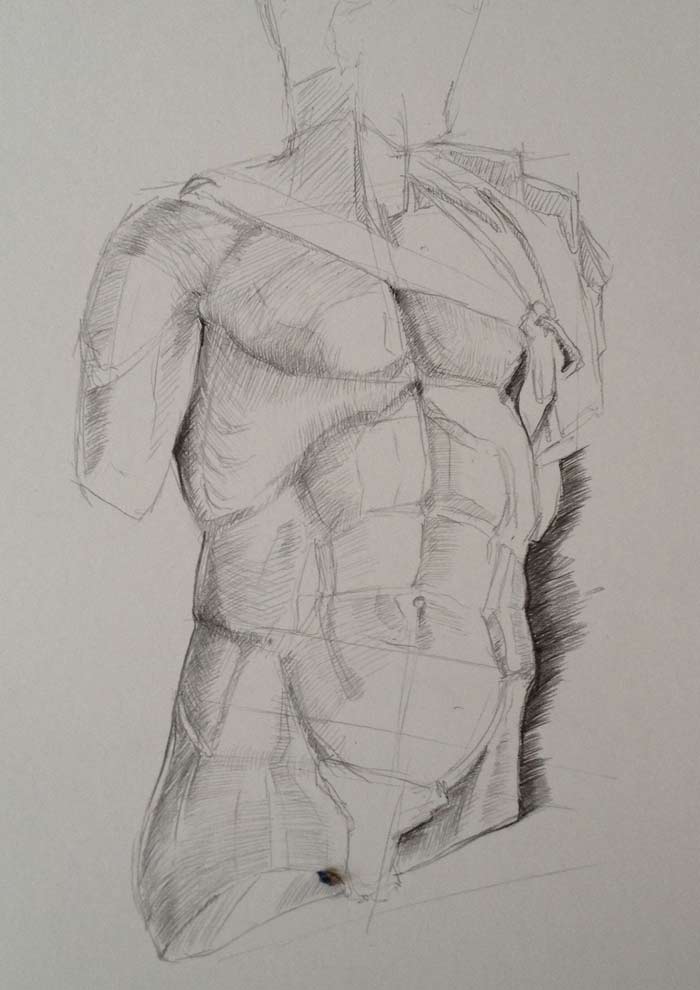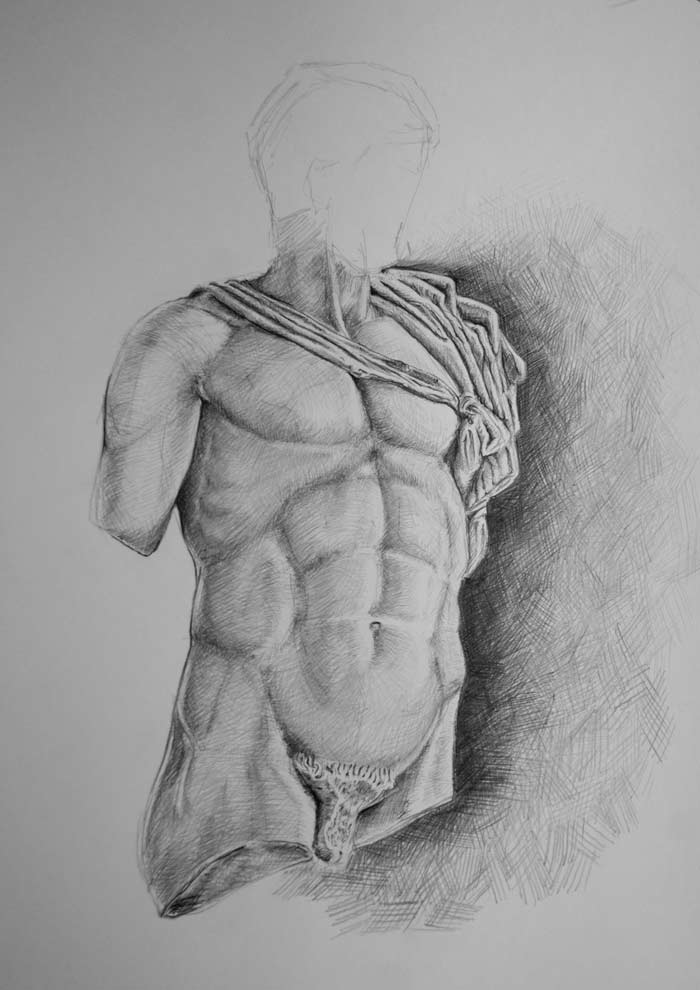Diomedes
Drawings by Johann Krammer, Anatomy Master Class student
Recently I had a time to visit the Glyptotek museum.
From the first moment at my first visit I was impressed about the bust of the Greek hero “Diomedes”. So I decided to try a sketch of this statue.
First I made at home a sketch from a photograph to know the main features of the bust and the most important shades.
I had three sentences from you in my mind:
– Use a sharpened pencil
– Contrapposto
– A marble bust is almost white
Here are my results:



My drawing process was a bit slow and the light changed during sketching.
Thank you for your three valuable sentences; I hope I was able to implement something of it.
With kind regards,
Johann
Feedback from Vladimir London, Anatomy Master Class tutor
Hi Johann,
It is very good that you draw classical sculptures and use constructive drawing principles in your artworks.
There are few small points you may double check:
1. The sternocleidomastoid muscle of the neck is attached to the mastoid process of the skull that is located behind an ear; in your drawing this muscle goes towards the ear itself.
2. In your drawing, second sternocleidomastoid muscle is connected to the manubrium of sternum not on the same level as the first one.
3. The sternum (breastbone) looks a bit shorter than it should. Usually, it has the same length as the height of the face or height of the pelvis.
4. The insertion point of the breast muscle in your drawing is located a bit closer to the humerus head than it should.
The points 3 and 4 are might be due to the foreshortening in perspective. When drawing a human figure, a good rule is not to follow geometrical rules of perspective to the point. Treat the figure as if you see it from a distance, not close-up. This way, you will avoid small legs or small head when drawing a figure from above or below.
By “drawing what you know”, you will avoid mistakes that are inevitable when you are copying what you see.
To your creative success,
Vladimir
Learn human body anatomy and proportions quickly and easily
One-time payment - Lifetime Membership
$97 USD




